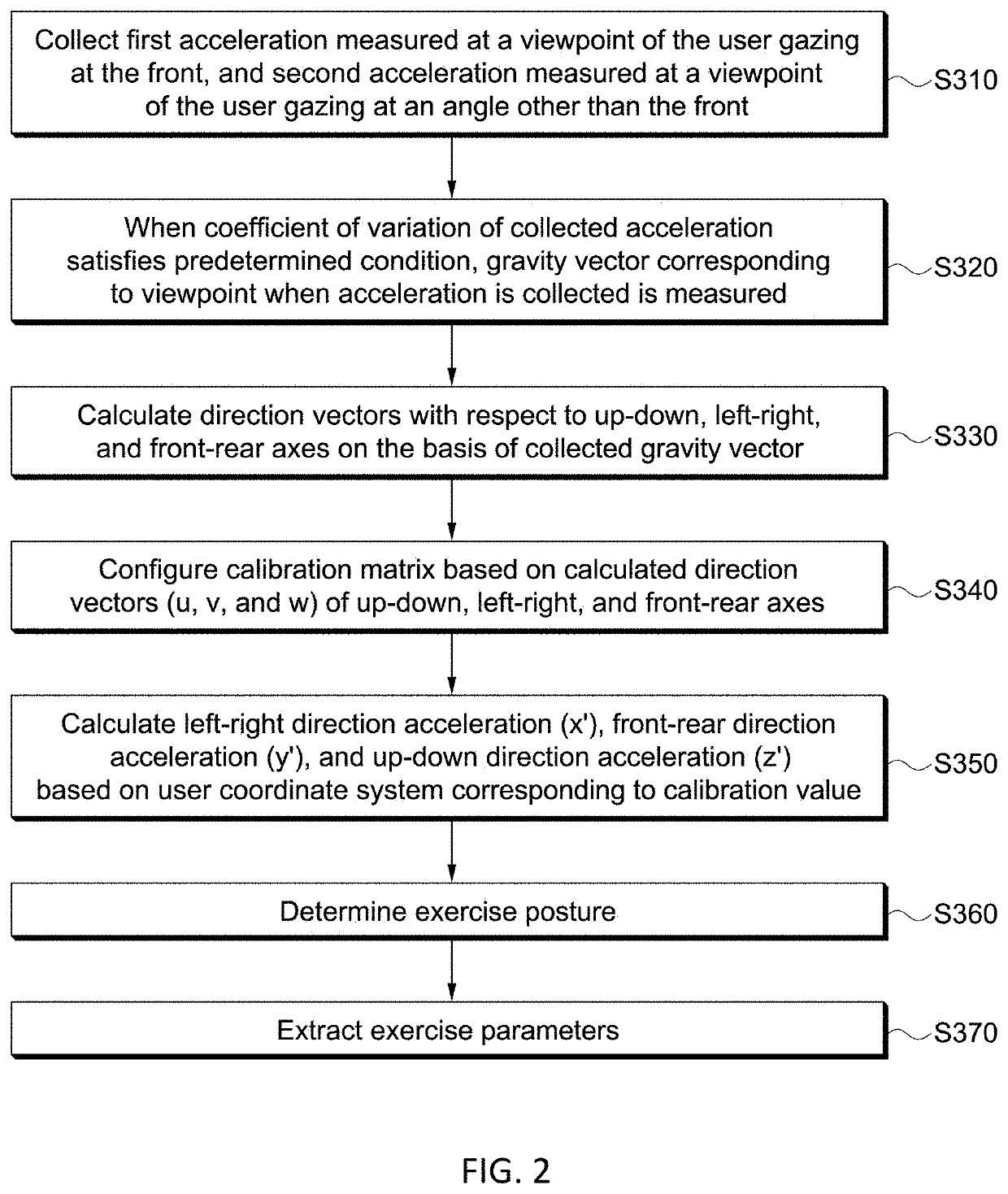Exercise analysis system using sensor worn on user's head
a technology of exercise analysis and sensor, which is applied in the field of exercise analysis system using a sensor worn on the user's head, can solve the problems of difficult to distinguish front and rear, left and right directions of a person or a device, and the power consumption of a gyroscope, and achieve the effect of improving the accuracy of exercise analysis
- Summary
- Abstract
- Description
- Claims
- Application Information
AI Technical Summary
Benefits of technology
Problems solved by technology
Method used
Image
Examples
first embodiment
[0102]FIG. 9 is a view showing an example of an acceleration graph with respect to time of an exercise posture (freestyle) in the case of swimming according to the present invention. The freestyle is a stroke of alternatingly raising and pushing forward both arms in a prone position while kicking, and may be analyzed by dividing the stroke into moving forward and turning as shown in FIG. 9, and a first exercise parameter may be derived and used as exercise information as shown below.
Stroke count:(if x′(n) > 0.5 && x′(n − 1) Stroke rate: Stroke count / Elapsed timeTurning time point:(if z′ 0.5 in less than 2 seconds) turn occursLap time: Time elapsed between turning time pointsLap count: Turning countExercise distance: Lap count × Lane length informationCalorie consumption: Exercise distance × Calorie consumption coefficientStroke distance: Lane length information / Stroke count between turnsExercise speed: Lane length information / Lap timeExercise efficiency: Stroke count between turns +...
second embodiment
[0104]FIG. 10 is a view showing an example of an acceleration graph with respect to time of an exercise posture (breaststroke) in the case of swimming according to the present invention. The breaststroke is a stroke of folding both arms and legs at the same time and stretching the arms forward and the legs backwards, and may be analyzed by dividing the stroke into moving forward and turning as shown in FIG. 10, and a first exercise parameter may be derived and used as exercise information as shown below.
Stroke count:(if z′(n) > 0.5 && z′(n − 1) Stroke rate: Stroke count / Elapsed timeTurning time point:(if y′> 0.5 && |x′| > 0.5 in less than 2 seconds) turn occursLap time: Time elapsed between turning time pointsLap count: Turning countDistance: Lap count × Lane length informationCalorie consumption: Distance × Calorie consumption coefficientStroke distance: Lane length information / Stroke count between turnsSpeed: Lane length information / Lap timeSwolf: Stroke count between turns + Lap ...
third embodiment
[0106]FIG. 11 is a view showing an example of an acceleration graph with respect to time of an exercise posture (backstroke) in the case of swimming according to the present invention. The backstroke is a stroke of alternatingly pushing forward both arms making circles in a supine position while kicking with the feet, and may be analyzed by dividing the stroke into moving forward and turning as shown in FIG. 11, and a first exercise parameter may be derived and used as exercise information as shown below.
Stroke count:(if x′(n) > 0 && x′(n − 1) Stroke rate: Stroke count / Elapsed timeTurning time point: (if y′Lap time: Time elapsed between turning time pointsLap count: Turning countDistance: Lap count × Lane length informationCalorie consumption: Distance × Calorie consumption coefficientStroke distance: Lane length information / Stroke count between turnsSpeed: Lane length information / Lap timeSwolf: Stroke count between turns + Lap time
[0107]In addition, the second exercise parameter ex...
PUM
 Login to View More
Login to View More Abstract
Description
Claims
Application Information
 Login to View More
Login to View More - R&D
- Intellectual Property
- Life Sciences
- Materials
- Tech Scout
- Unparalleled Data Quality
- Higher Quality Content
- 60% Fewer Hallucinations
Browse by: Latest US Patents, China's latest patents, Technical Efficacy Thesaurus, Application Domain, Technology Topic, Popular Technical Reports.
© 2025 PatSnap. All rights reserved.Legal|Privacy policy|Modern Slavery Act Transparency Statement|Sitemap|About US| Contact US: help@patsnap.com



